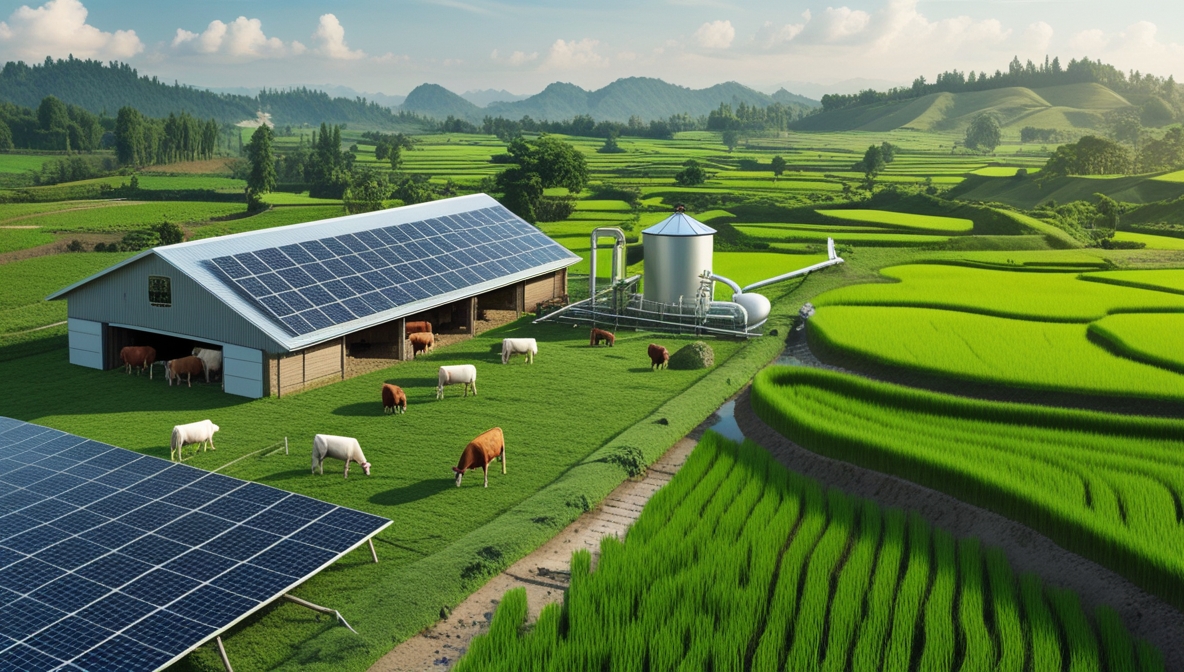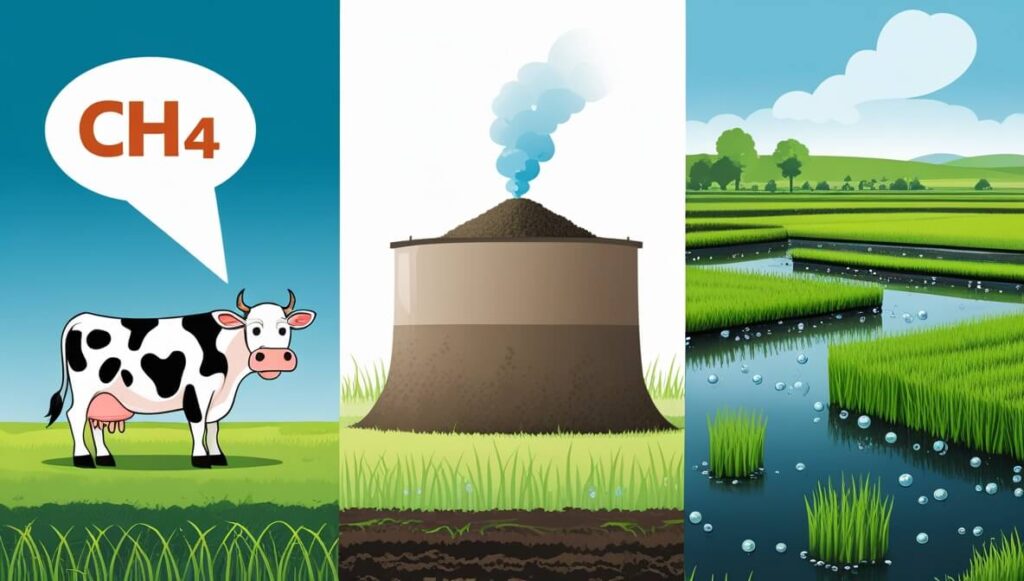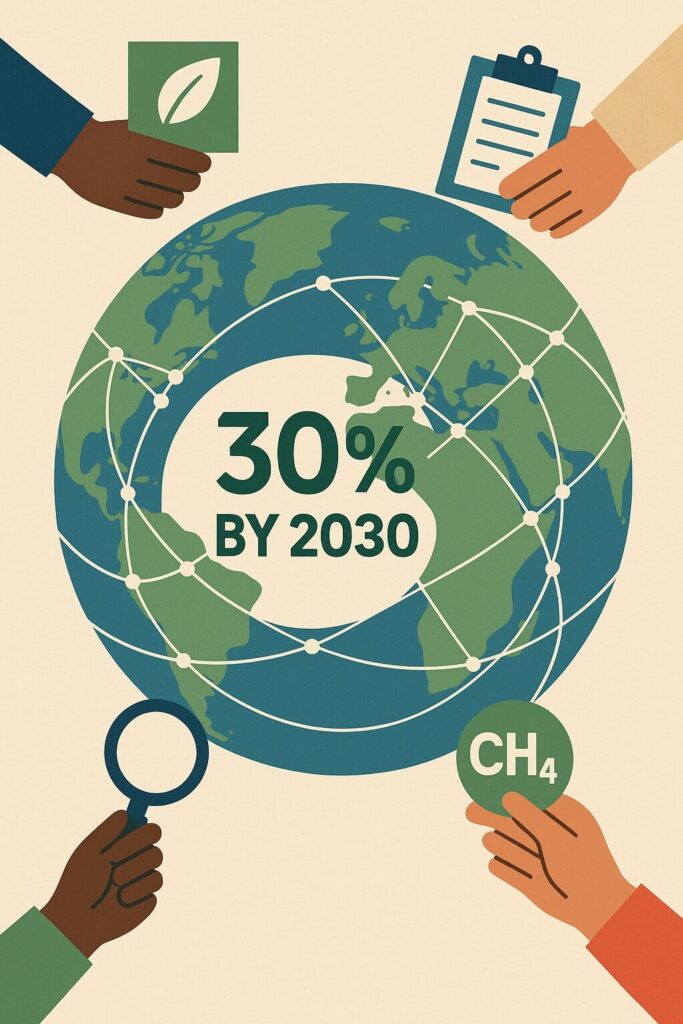Matters: Unpacking Key Strategies for Reducing Agricultural Greenhouse Gases

Methane Matters: Unpacking Key Strategies for Reducing Agricultural Greenhouse Gases
While our climate conversations often focus on carbon dioxide from tailpipes and smokestacks, a powerful, often underestimated, greenhouse gas is actively warming our planet from farms and fields: methane. This potent, short-lived climate pollutant plays a disproportionately large role in global warming, making its reduction an urgent priority.
Agriculture is a significant contributor to this challenge, releasing vast amounts of methane through processes essential to food production. However, the narrative isn’t one of blame but of immense opportunity. The good news is that innovative, actionable strategies exist that not only tackle agricultural methane reduction but also offer tangible benefits for farmers, enhancing productivity and creating more resilient agricultural systems.
This article will unpack why agricultural methane reduction is a crucial, fast-acting lever for climate action. We’ll delve into its primary sources—from the digestive systems of livestock to flooded rice paddies and manure management—and explore cutting-edge, sustainable strategies that offer a dual opportunity for immediate climate benefits and more efficient, resilient farm operations. Join us as we explore how farmers worldwide can contribute to a healthier planet while also boosting their bottom line.
- Methane Matters: Unpacking Key Strategies for Reducing Agricultural Greenhouse Gases
- 1. The Hidden Climate Giant: Why Agricultural Methane Matters So Much
- 2. Where Does It Come From? Key Sources of Agricultural Methane
- 3. Strategies for Livestock: Reducing Enteric Methane Emissions
- 4. Smart Solutions for Manure & Rice: Tackling Other Major Sources
- 5. Beyond the Farm Gate: Policy, Innovation & Collaboration for a Methane-Light Future
- Conclusion: A Win-Win for Farmers and the Planet
- Frequently Asked Questions (FAQs) About Agricultural Methane Reduction
1. The Hidden Climate Giant: Why Agricultural Methane Matters So Much
Methane (CH4) might be less abundant in the atmosphere than carbon dioxide (CO2), but it punches far above its weight in terms of warming potential. Over a 100-year period, methane is approximately 28 times more powerful than CO₂ at trapping heat. Crucially, its impact is even more dramatic in the short term, becoming around 80 times more potent over a 20-year timeframe. This makes methane reduction a vital, fast-acting lever for slowing near-term global warming and buying us critical time to decarbonize other sectors.
Agriculture stands as a major anthropogenic source of this potent gas. It contributes nearly 40% of global human-caused methane emissions, making it a key sector for climate mitigation efforts. This isn’t just about atmospheric chemistry; methane-fueled climate change directly impacts our food systems. Changing weather patterns, increased droughts, and unpredictable seasons threaten crop yields and livestock health, jeopardizing global food security. Furthermore, methane contributes to tropospheric ozone, a harmful air pollutant that impacts human respiratory health. Therefore, addressing agricultural greenhouse gas emissions is not just an environmental imperative but a fundamental step towards protecting both our planet and our dinner plates.

2. Where Does It Come From? Key Sources of Agricultural Methane
Understanding the sources of agricultural methane is the first step toward effective mitigation. Three primary culprits dominate the landscape of greenhouse gas emissions in agriculture:
- Enteric Fermentation (The Bovine Burp): This is by far the largest source. Ruminant animals like cattle, sheep, and goats possess specialized digestive systems containing microbes that help break down fibrous plant material. As a byproduct of this fermentation process, methane is produced and primarily released through burping. Globally, cattle alone account for roughly 75% of all enteric methane emissions, highlighting their central role in this challenge.
- Manure Management: When animal manure is stored in anaerobic (oxygen-limited) conditions, such as in lagoons or deep pits, anaerobic decomposition occurs. This biological process generates methane. Wet storage systems are particularly problematic, as they create ideal conditions for methane-producing microbes to thrive.
- Rice Cultivation: Flooded paddy fields, common in rice cultivation, create an anaerobic environment in the soil. Under these oxygen-deprived conditions, organic matter decomposes, leading to the emission of methane. The methane then escapes into the atmosphere primarily through the rice plants themselves or as bubbles rising from the soil. This source is a significant contributor, especially in major rice-producing regions across Asia.
Identifying these distinct sources allows for targeted methane reduction strategies that are tailored to specific farming practices.

3. Strategies for Livestock: Reducing Enteric Methane Emissions
Addressing enteric fermentation in ruminants is crucial for livestock methane reduction. Fortunately, scientific advancements are paving the way for effective solutions:
- Revolutionary Feed Additives: These represent some of the most promising avenues.
- 3-Nitrooxypropanol (3-NOP): Marketed as Bovaer™, this additive works by directly inhibiting an enzyme crucial for methane production in the rumen. Studies have shown significant reductions, from around 30% in dairy cows to up to 45% in beef cattle in intensive feeding systems. It’s already approved for use in over 60 countries. The primary challenge lies in delivering it consistently to grazing animals.
- Red Seaweed (Asparagopsis taxiformis): This natural additive has garnered significant attention due to its high potential. Lab studies have indicated reductions of up to 90%, with longer-term trials showing around 30% reduction. It’s now approved in some regions, like Australia, for beef feedlots. Challenges include scaling up production sustainably, ensuring no adverse effects on animal products (like milk or meat quality), and potential iodine levels.
- Dietary Adjustments: Beyond additives, modifying diets can also help. Feeding more digestible forage and grains, or enhancing low-quality crop residues with nutrient supplements, can improve feed efficiency. More efficient digestion means less methane produced per unit of milk or meat, contributing to more sustainable livestock farming.
- Genetic Selection: Emerging research focuses on breeding animals that naturally produce less methane. Scientists are identifying genetic markers associated with lower emissions, offering a long-term, sustainable pathway for reduction.
- Improved Animal Health & Productivity: Healthier, more productive animals are more efficient. By improving feed conversion ratios, animals produce more output (milk, meat, wool) with fewer resources, thereby emitting less methane per unit of product.
- Anti-Methane Vaccines: While still experimental, anti-methane vaccines aim to stimulate an immune response in the animal that suppresses the methane-producing microbes in the rumen. This is a promising area of research for future widespread application.
4. Smart Solutions for Manure & Rice: Tackling Other Major Sources
Beyond livestock, effective manure management, methane reduction, and sustainable rice cultivation methane strategies are critical for comprehensive agricultural climate action.
For Manure Management:
- Anaerobic Digestion (Biogas Production): This is a powerful solution. Manure is placed in sealed tanks (digesters) where microbes break it down in the absence of oxygen, producing biogas (rich in methane). This methane can then be captured and utilized as a renewable energy source for electricity, heat, or even vehicle fuel, or safely flared, preventing its release into the atmosphere. This turns a waste product into a valuable resource, simultaneously reducing emissions.
- Aerobic Management: Managing manure in drier, oxygen-rich conditions, such as through composting, daily spreading on fields, or solid storage systems, significantly reduces methane production compared to anaerobic liquid systems.
- Covers for Lagoons: For operations that utilize liquid manure lagoons, covering these lagoons can capture the emitted methane, preventing its release and often allowing for its utilization.
For Rice Cultivation:
- Alternate Wetting and Drying (AWD) / Intermittent Irrigation: This technique is a game-changer for reducing agricultural greenhouse gases from rice paddies. Instead of continuous flooding, fields are periodically allowed to dry out. This introduces oxygen into the soil, suppressing methane-producing microbes without compromising rice yield. This method can reduce methane emissions by an impressive up to 80%.
- Direct Seeding: Sowing rice directly into dry soil rather than transplanting seedlings into already flooded fields can shorten the period of flooding, thereby reducing methane emissions.
- System of Rice Intensification (SRI): This holistic approach combines AWD with other improved practices such as transplanting younger seedlings, wider spacing, and improved soil and nutrient management. It leads to both increased yields and significant methane reductions.
- Aerobic Rice Systems: While still developing, these systems involve growing rice in non-saturated, well-drained soils, drastically reducing methane emissions (up to 70%) but requiring different water management.
- Organic Matter Management: Proper management of rice straw and residues is vital. Instead of burning, which releases GHGs, incorporating straw into the soil (mulching) or using it for other purposes (e.g., biochar production) reduces emissions.
These climate-smart agriculture practices for manure and rice fields offer practical, scalable solutions that benefit both the environment and farm efficiency.
5. Beyond the Farm Gate: Policy, Innovation & Collaboration for a Methane-Light Future
While farm-level strategies are crucial, widespread agricultural methane reduction requires a supportive ecosystem of policy, innovation, and global collaboration.
A significant driver for change is the Global Methane Pledge (GMP). Launched in 2021, over 150 countries have now joined this commitment to collectively cut global anthropogenic methane emissions by at least 30% by 2030 from 2020 levels. Agriculture is explicitly recognized as a key sector for achieving this ambitious goal, pushing governments and industries to act.
This pledge is backed by concrete support. Over $2 billion in grants have been mobilized under the GMP to support methane abatement projects, with ongoing funding from organizations like the Climate and Clean Air Coalition (CCAC), USAID, and the European Commission. This financial and technical support is vital for de-risking investments and enabling farmers in developing nations to adopt new technologies.
However, challenges remain. Research and Development (R&D) is continuously needed to refine existing solutions (e.g., making feed additives viable for diverse grazing systems) and explore new innovations (e.g., more effective and scalable vaccines). Furthermore, significant barriers to farmer adoption include the upfront costs of new technologies, a lack of awareness about the benefits, and perceived risks or complexities. This is where supportive climate policy in agriculture comes in. Governments must implement clear frameworks, provide financial incentives (subsidies, tax breaks), offer technical assistance, and strengthen extension services to encourage widespread uptake of these strategies.
Finally, conducting Life Cycle Assessments (LCAs) is critical. These comprehensive analyses help quantify the net climate effects of interventions, ensuring that solutions truly reduce overall emissions without unintended consequences, guiding smarter investment and policy decisions for greenhouse gas reduction initiatives.

Conclusion: A Win-Win for Farmers and the Planet
Agricultural methane, a potent but short-lived greenhouse gas, presents a unique and urgent opportunity for meaningful climate action. By implementing innovative strategies across livestock management, manure handling, and rice cultivation, we possess the tools to significantly curb agricultural greenhouse gases.
Crucially, these solutions are not just about environmental compliance; they represent a powerful “dual opportunity.” Many of these strategies directly lead to more efficient, productive, and resilient agricultural systems. From improved animal health and feed efficiency to the creation of valuable biogas from waste, farmers stand to gain tangible economic benefits. Agriculture, the very backbone of human civilization, can transform from a major emitter into a powerful solution in the fight against climate change.
We call upon policymakers to champion these solutions through clear frameworks and incentives, researchers to continue pushing the boundaries of innovation, and farmers worldwide to explore and adopt these transformative practices. By working together, we can cultivate a future where our food systems contribute to a healthier planet, ensuring sustainability for generations to come. What steps will you take to support agricultural methane reduction in your community or operations? Share your insights, and let’s grow a methane-light future together!
Frequently Asked Questions (FAQs) About Agricultural Methane Reduction
- Q: Why is methane from agriculture a big concern for climate change?
- A: Methane is a very potent greenhouse gas, trapping significantly more heat than CO₂ over short periods (e.g., 80 times more potent over 20 years). Agriculture is responsible for about 40% of human-caused methane emissions, making it a critical sector for immediate climate action.
- Q: What are the main sources of methane from farming?
- A: The primary sources are enteric fermentation (burping by ruminant livestock like cattle), manure management (especially in liquid storage systems), and flooded rice cultivation.
- Q: How can farmers reduce methane emissions from their cattle?
- A: Farmers can use feed additives (like 3-NOP or red seaweed), make dietary adjustments for better feed digestibility, select animals with genetics for lower methane production, and improve overall animal health and productivity.
- Q: What are sustainable ways to reduce methane from rice paddies?
- A: Key strategies include Alternate Wetting and Drying (AWD) or intermittent irrigation, direct seeding, the System of Rice Intensification (SRI), and managing organic matter by incorporating straw instead of burning it.
- Q: What is the Global Methane Pledge, and how does it relate to agriculture?
- A: The Global Methane Pledge is an international commitment by over 150 countries to collectively reduce global anthropogenic methane emissions by at least 30% by 2030. Agriculture is identified as a crucial sector for achieving this reduction target.



